If there is one thing I learned while being in the Arctic it is that you are at the mercy of the weather every single second of every single day. As the majority of the northern hemisphere was entering the first few satisfying weeks of Spring, Iqaluit in northern Canada was experiencing its average March temperature of -35°C.
Stepping off the plane I entered the freezer that is springtime Iqaluit. With every breath I took I was sure I could feel ice crystals forming inside my lungs. By the time I had walked to the airport terminal my meager jeans had already proved inadequate for a 100m dash in the Arctic and my hands were sporting a worrying tinge of purple.
My inappropriate dress was quickly remedied as I got hold of my bags and seized the polar clothing I had been supplied with courtesy of Arctic Kingdom – a travel and outfitting company specializing in polar trips. It is quite terrifying to think how quickly you can literally freeze here. As my time in Iqaluit progressed I learned to respect the cold and not to be fooled by the cozy warmth of the buildings. When you step outdoors it takes mere milliseconds for the cold to hit.
But, in the far north the cold brings a unique beauty. 500km north of the treeline a white wilderness takes over. The white envelops the landscape flawlessly. Snow covered plains convene with the sea ice to create one image of a seemingly untouched and unbroken environment. From afar it appears delicate. Up close there is no mistaking its resilient and uncompromising strength.
As I raced out across the sea ice one Sunday morning atop a snowmobile with Graham Dickson – owner and founder of Arctic Kingdom – I was speedily introduced to the harsh realities of the Arctic. It’s a catch-22 in this climate: When the temperature plummets below about -20°C it is too cold for snow, the air is bitingly crisp and the sky is a cloudless expanse. This makes for great over-land trips as the visibility is high. However, any exposed piece of flesh will freeze in minutes, if not seconds. On the other hand, when the temperature is higher, but still well below 0°C, it can and will snow. This makes over-land trips near impossible as the visibility can drop dramatically and the Inuit guides will advise you to stay at home.
On this Sunday morning it was the latter of the two temperature scenarios that we had to contend with. We were attempting to reach a polenya – an area of open water where the ice has cracked/not formed– approximately 20km from Iqaluit so we could check it out for diving opportunities. We had gone no further than 4km when the decision was made to turn back. The snow was whipping up in icy threads, which not only made the visibility poor but also made us damp – a dangerous situation in the Arctic. Turning back towards Iqaluit we had to leave our mission for the day incomplete.
These snowstorms, or whiteouts, aren’t to be overlooked when in town either. On another day I embarked on a 1-mile walk along the main streets of Iqaluit towards Graham’s house, it was a walk I had done countless times. But on this day the snow was quite frankly pummeling me as it tore across any open area with frightening force. With my head bowed I trudged on thinking what on earth would it be like to be truly out in the wilderness in such conditions, this seemed difficult enough!? Continuing with my walk I realised that not being able to see the road should be cause for concern. Nevertheless, I made it to my destination unharmed and was given my usual hyper welcome from Graham’s two puppies Hudson and Riley, while his lovely wife Maureen warmed me up immediately with a big mug of coffee.
Graham and I weren’t going to give up on our mission to reach the polenya despite all the adverse weather and when a break came we took our chance. Arctic Kingdom is in the process of establishing a new base in Iqaluit and dive trips are one of the many adventurous exploits on the cards. This polenya was a potential dive entry site, the alternative being cutting through 3m+ of ice. So, we embarked upon our second attempt to reach the polenya. This time we had Louise Murray joining us. Louise is a photojournalist and Arctic Kingdom expedition leader and she had the unpleasant experience of getting to ride in the qamutic (sled) behind the snowmobile. The ice may look sleek from afar, but it is rough and tough terrain and every little bump jars. If your chiropractor were to see you riding in a qamutic he/she would most likely weep.
This time round we made it to the polenya and as we sped across the ice I was totally amazed. We were in-fact crossing the sea. To think that the seawater was just a matter of metres below me was surreal. Snowmobiles and qamutics may not be the most comfortable way to travel, but the sights you see are more that worth the jiggling around. To stare out across sea ice and only see white, white, white as far and wide as the eye can see is breathtaking.
Approaching the polenya I became taken aback. To see open running water out on the land is entirely unexpected and I had no idea I would be so enthralled by it. I hadn’t seen open water for weeks. As we contemplated this as a potential dive entry site our prior fears were confirmed: Polenyas exist because the currents are so strong that the water moves fast enough to keep the ice open. To plunge in here would be insane – we all love a drift dive, but when that drift dives sees you sucked under sea ice it is an entirely different story… I’m sure you would see a few stunning sights en-route to your death though.
With the polenya a no go for diving our next option was breaking through the ice on the local park pond. Stomping down to the park with the newly acquired auger screw in hand Graham and I stopped atop the pond. As Graham spiraled the auger screw around and around and around I looked on with hope. The 2m screw ran out of length, the ice was too thick. With my hands and knees down on the ice I peered through at the so near but yet so far water.
Our final hope was to make it to the floe edge, which was a 40km snowmobile ride out of town. Unfortunately the weather made this impossible as temperatures plummeted back down to -30°C and winds gusts of up to 70kmph created a wind-chill temperature of -55°C. Funnily enough March is not the prime time for diving in the Arctic for all the reasons we encountered. I knew this when I embarked upon my trip and it was certainly not difficult to understand why it was impossible when I was right there experiencing the sometimes-terrifying conditions.
Admitting defeat we left the diving plans to one side. The trip still produced many highlights for me, one of which was learning to drive the snowmobiles. I warned Graham before being let loose on them that I didn’t have a driving license. I can’t drive a car. He seemed unperturbed by my warnings though, much to my delight (I should add – I wasn’t breaking any laws by driving a snow-mobile). Louise and I were even given the honorable task of taking his brand-spanking new machines for a spin. You learn fast on a snowmobile. As my housemate Erin warned me – “you need to really ride it, be in charge, no hesitation, no deliberation.” Understood.
You can reach other communities via snowmobile, but it would take a matter of days. And for a tentative driver like me more like a matter of weeks. Generally, Iqaluit and the other northern communities are only accessible by air (or an extremely long snow-mobile ride) in the winter months and there is a real feeling of severance from “regular” life. Things work differently in the far north. I gawped at the $5 loaves of bread and cried at the cost of vodka in the bars, but I had a pleasant surprise when it came to my trip to the cinema and was only charged the decent price of $8. I later discovered I had been mistaken for a child. Wow.
Life in the far north is certainly different, but I loved the experience and diving wasn’t the sole purpose of my trip though. I wasn’t here to merely tick a box. I was here to experience life in the freezer, to see if I liked it, could handle it and would want to work in it. Although I was based in a town and not camping out on the ice having the extreme Arctic experience, I still had an insightful and gratifying trip. I did like it, I could handle it and I would want to work in it.
My huge thanks go to everyone at Arctic Kingdom, Maureen, Louise, Erin and everyone else who made my time in Iqaluit amazing!
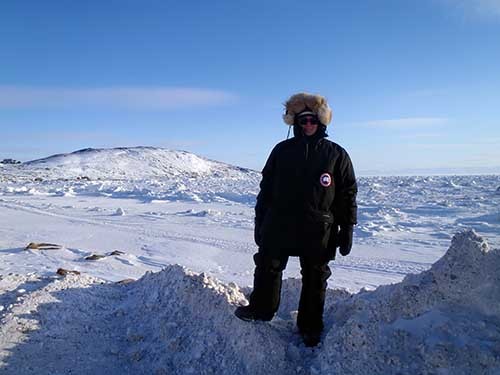
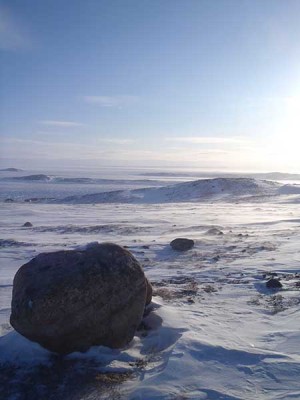
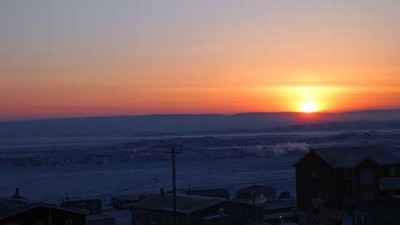
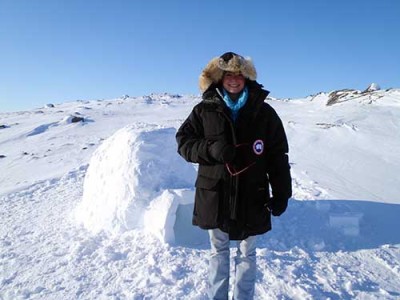
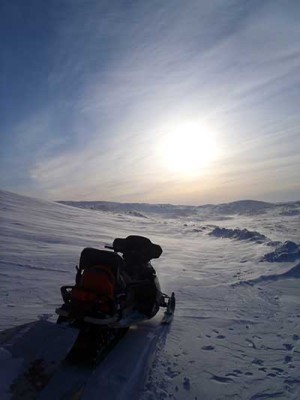
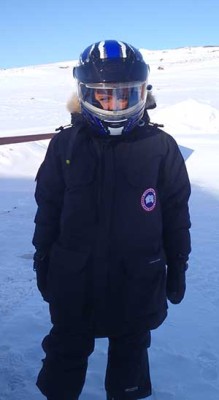
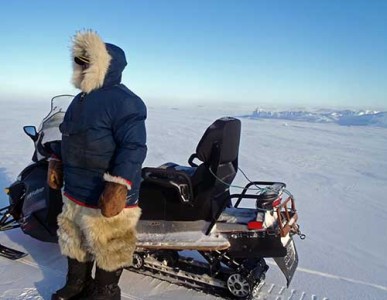
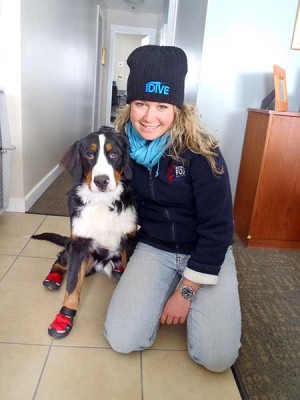
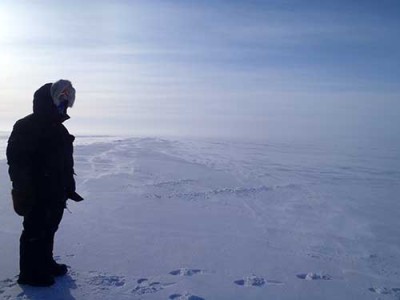
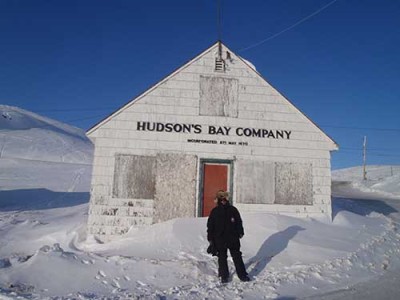
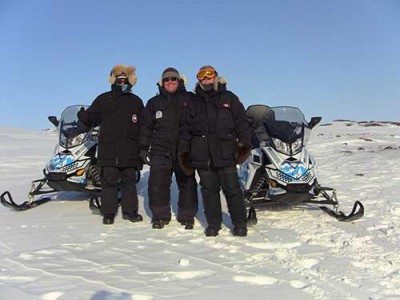
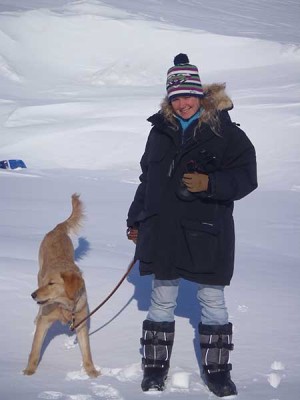
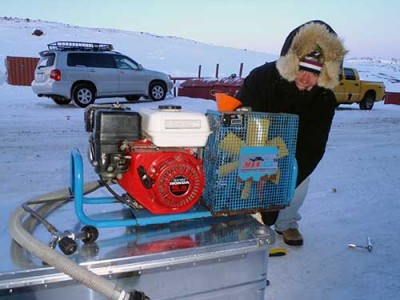
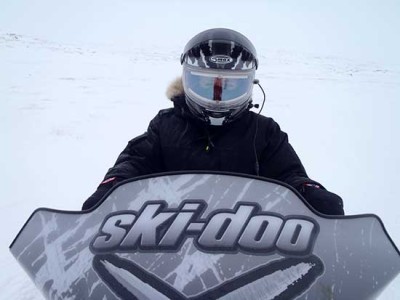
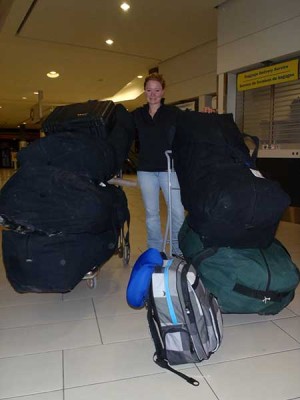
You did very well considering the conditions were what can only be described as brutal for much of your trip.
Hope to see you in the north again in more clement conditions!
Louise